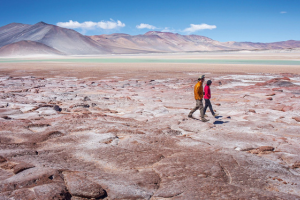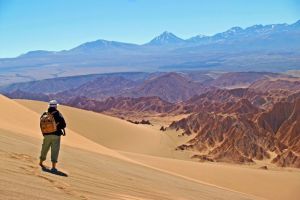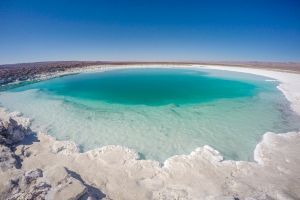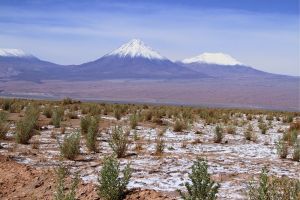
At travelArt, sustainability and social responsibility are at the centre of our corporate values. We are committed to providing high quality services that not only meet the travel needs of our guests, but also make a positive contribution to the preservation of Chile’s culture and environment.
In some areas of Chile, we work with local ethnic groups when visiting sites that are managed by them.
Particularly in the north of Chile, this applies to some attractions near San Pedro de Atacama.


These are managed by the indigenous Socaire community. Their livelihood is also based on livestock farming, traditional agriculture and by-products. The Atacameño community of Socaire is made up of members descended from the traditional families of the Socaire area.

Chaxa lagoon & Salar de Tara:
These sites are in the care of the indigenous Lickan Antay community of Toconao. They are committed to promoting solidarity, responsibility, respect and commitment among their members and to building a new intercultural society that promotes the value of differences and non-discrimination.

Moon valley:
The Moon Valley is administered by the Valle de la Luna Indigenous Association, an association of 6 Atacameño communities.

Aldea de Tulor, Lagoons Baltinache & Tebinquinche:
The ethnic Atacameña community of Coyo looks after this landscape and cultural heritage of the country. The community lies 2,400 metres above sea level and is one of the 24 indigenous communities that belong to the Salar de Atacama basin. They grow traditional crops such as alfalfa, maize, wheat and fruit trees. Livestock farming consists of cattle, goats and, to a lesser extent, pigs, rabbits and chickens. Handicrafts are made from the wool of sheep and llamas.

This lagoon is located in the Atacameña community of Solor.
Local archaeological records show that the community of Solor is home to one of the oldest archaeological sites in the Atacama region. The Ayllu of Solor once served as a place for agricultural production and livestock breeding. The surrounding meadows and the Cejar lagoon were important areas for breeding animals such as lambs, goats and llamas.
Nowadays, the Ayllu of Solor is still a residential and agricultural area where livestock farming is still practised. The practices inherited from the ancestors of the Atacameño continue to characterise the territory and the daily lives of the members of the Ayllu de Solor community.
In the Araucania region, the tourist route ‘Rutas Ancestrales Araucarias’ offers the opportunity to experience the way of life and culture of the indigenous Mapuche communities. Visitors can discover the regional gastronomy, take part in craft workshops and explore seed-protecting vegetable gardens and indigenous forest trails.
The sustainable tourism project ‘Rutas Ancestrales Araucarias’ was honoured with the prestigious German ‘TO DO 2021 AWARD’ in 2021. Every year, this international competition recognises tourism experiences that involve the local population in planning and implementation while promoting equal opportunities and social progress in the community.

Easter Island, also known as Rapa Nui, is not only famous for its mysterious stone Moai statues, but also offers breathtaking landscapes with volcanic craters and a rich Rapa Nui culture. A large part of the island comprises the Rapa Nui National Park, which is a UNESCO World Heritage Site and has been managed by the indigenous Mau Henua community since 2018. Mau Henua is committed to protecting and preserving the cultural heritage of the Rapa Nui by conserving historical sites, moai statues and traditional practices.

